All Resources

TorranceLearning – Trello Learning
Trello is a nifty website and app that lets us create digital task cards. It’s got a lot of benefits, too. It’s not location-specific so we don’t need to be in the office to update cards or see a board. The user interface allows for almost infinite uses of the app; anything that would benefit from categorizing, chunking, labeling, or color coding could take advantage of Trello.
Employee Engagement for Dummies - Chapter 14
On July 30, author and keynote speaker Bob Kelleher will present a webinar for Training Mag Network members and our guests based upon his research and findings on the topic of his new book, Employee Engagement.
Bob has generously provided several chapters of the book for you to download as a preview. Here is Chapter 14.
Chapter 14
All Aboard! OnboardingTechniques to Foster Engagement
Recognizing the importance of onboarding
Seeing things from the new hire’s point of view
Knowing what to do before a new hire starts, on the first day, and in the first week
Establishing performance expectations
How to Build a Business Case for Formalization of Learning Analytics
This presentation will offer practical yet credible advice on how learning leaders should go about the process of building a business case to formalize learning analytics into the L&D organization and budget. The session will cover critical tools and techniques to establish relevancy for learning measurement and positively create a culture supportive of L&D measurement.
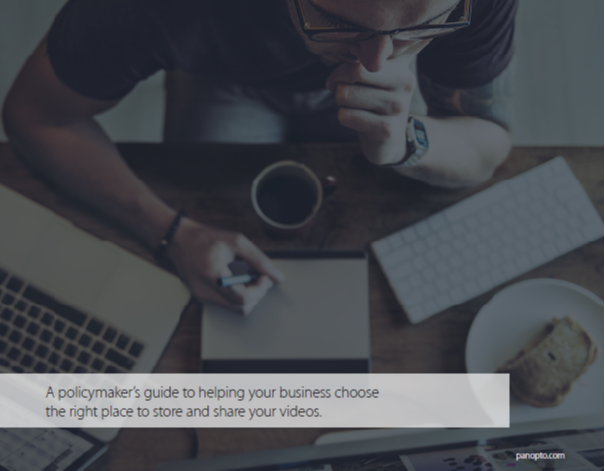
Your YouTube Channel vs. The Corporate YouTube
Video is increasingly the tool by which businesses communicate and share valuable information. As organizations continue to find new value in video - creating online training videos, streaming live executive broadcasts, webcasting events, and offering on-demand presentations and product demos - the question of where to keep all this video has become critical.
Often this question comes down to two hosting options - video sharing sites like custom YouTube channels, or "the corporate YouTube" video content management system. Each option has its pros and cons, which are discussed in this paper.
Click below to download this white paper.

Celebrate Your Expertise - Share and Standout - Workshop Tip#76
In the previous tip we talked about sharing your insights. In this fifth installement of the five-part blog series about The All-New TrainingMagNetwork.com Open Learning Environment, we will talk about presenting yourself as an expert and specialist of a specific field.
TMN members can share with friends, peers, leaders and if they wish, in the world of social media like Twitter, LinkedIn and Facebook. We encourage TMN members to announce and celebrate their accomplishments.
On the other hand, people with whom members share their achievements are likewise provided the facility for feedback by sharing ideas and comments. Mobile apps and digital watches are so good at this. Their entry to the market is by providing people immediate/instant feedback - whether they are walking, running or consuming calories.
Feedback is key for people to correct and achieve their goals. In the Path2X (Path to Expertise), our members accomplish this through Path2X eShare.
Path to Expertise Progress
The classic resume is static. It is insufficient because it fails to provide the reviewer a better perspective of the capabilities and experiences of an applicant. With teams, leaders have no immediate way to assess capacities, status of ongoing learning and new skills developed by team members. They have to wait for evaluation and assessments which may happen only once a year.
In Training Mag Network we try to provide a dynamic way for leaders and members to update interests and skills development. TNM members share their Path2X progress with their leaders, bosses, friends, peers and team. These people are able to comment and have discussions with the member/owner of the report. They can drill down into what resources the TMN member has "actually" studied, reviewed and submitted insights to. Members can share the Path2X report as often as they like. The Path2X Progress Report helps the member "celebrate, announce and demonstrate" their deliberate efforts in building skills and expertise.
The graphics below is an illustration of the Path2X Progress Report.
Seth Godin talks about connecting with the customers and standing out as an expert in this short clip of an interview with Bryan Elliott.
In the world where competition is the norm, how do you stand out against everybody else? Nowadays, it's not enough to be good at something or be connected to someone, you have to standout. According to William Arruda and Kirsten Dixson, "In today's workplace, creativity has trumped loyalty; individuality has replaced conformity; pro-activity has replaced hierarchy. Those who succeeded were aware of their talents and confident enough to use them to stand out and consistently deliver value to their teams.

Part 2: Top 125 In-Tuition
An analysis of the overall practices of 2013 Training Top 125 applicants vs. applicants in the four industries most represented in this group: finance and banking, health and medical services, real estate and insurance, and technology.

TorranceLearning – How to be a Great SME
While the learning side of the team has experience with their roles, it’s pretty rare that anyone actually teaches SMEs how to do theirs. That’s what you’ll do here in this mini-course. Check out the anatomy of a great SME and learn more about your role on the project team.

Little Book of Big Change
So, you’re taking on a change. And it needs to happen sooner rather than later, with as little pain and as much support as possible.
Simple, right?
Being a change leader is never easy. In fact, many change efforts fail outright. Many others never achieve their original visions.
This little book is designed to help you think about change in a way that will involve the people who can best help you be successful - formal and informal change leaders, and the people who will be affected by and must implement the change. The goal here is to help you avoid many of the landmines that can derail any change effort.
Employee Engagement: Practical Tools and Strategies
Is "doing more with less," resulting in burned out employees? Are you finding it difficult to keep employees engaged?

508 Compliance: Beginner's Guide to Captions for Training Videos
As technology continues to advance, video accessibility will become more and more important - both in terms of legal requirements and the needs of our world.
Captions have become much more ubiquitous with the growth of online video. Laws continue to close the accessibility gap by requiring captioning in more places where video is found, but people are also starting to appreciate the universal benefits of transcription and captioning.
As video continues to dominate the web and other public spaces, captioning will become less of an afterthought and more of a necessity in an increasingly accessible world.
Download this Guide for an excellent introduction to captioning (vs subtitles) their importance to learners and even their role in risk management (see pages start on #24!).

Talent Development Vs. Training
This study explores the thoughts of people working in the field about talent development and its relevance to their work. The researchers specifically asked participants about the role of talent development in their organizations, whether a Talent Development group should be established in their organizations if they didn’t have one, and their impressions of the relationship between talent development and training—and its possible impact on the field.

Grovo - Create Productive Goals and Objectives
When you begin a project, one of your first steps will be determining your goals and objectives. If you think of your project like a roadtrip, you can think of your goal as your destination and your objectives as the routes you have to take to get there. Both keep your efforts focused, but they do so in distinct ways. This resource helps you define your goals and objectives in a very effective way.
GrovoMicro
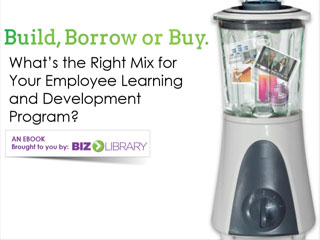
Build, Borrow or Buy. What’s the Right Mix for Your Employee Learning and Development Program?
Content. Every employee development program requires it. Every employee needs content to learn. There are no exceptions. This is one of those rare absolutes we simply cannot escape. But if you read about the state of the training industry, it would be easy to walk away believing that the newest application or technology innovation is all you really need to really improve your employee training results. Delivering actual, business benefits from your employee learning and development efforts requires more than simply adding a new application or acquiring a new piece of super-duper technology. What organizations must do is deliver meaningful content to employees.
eLearning Content is Everywhere! How to Bring it Alive with Online Video Presentations
Everywhere you look, eLearning content is begging to be captured and put online. Every time an expert gives a lecture, an executive keynotes a conference, a techie gives a chalk talk, a product manager briefs a sales team, or a manager hosts an orientation, valuable content is being created. The trick? How to capture, enliven, deploy, and track it for internal or external audiences. New online tools make it easy to capture your organization's best presentations and most engaging storytellers, turning them into rich, interactive learning content that's available 24/7 from any browser or mobile device.
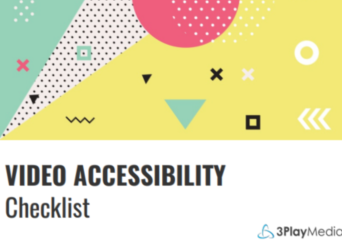
508 Compliance: Video Accessibility Checklist
Accessibility is becoming ever more important to organizations seeking to make all learning accessible and those who want to manage risk through compliance and even where 508 compliance isn't required, through best practices in instructional and training videos.
Click below to download this excellent resources, attend the webinar and watch for the companion piece in your InBox soon, "Beginner's Guide to Captions for Training Videos"

Grovo - Realize Design Thinking for Problem Solving
Many businesses approach the market by creating a product or service and then finding a buyer. But that's not the only way. Sometimes the opposite is needed. First, by listening to the market's frustrations and then catering to its needs. This is the idea behind design thinking -- a peopel-centric approach that sacrifices the problem-solver for the benefit of the customer's experience.

Stash the Cash
Examples, Demo Micro-Learning Ray Jimenez, PhD
VignettesLearning.com
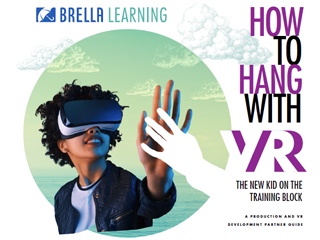
How to Hang with VR - The New Kid on the Training Block
So you know you want to incorporate virtual reality into your training. Everybody wants to bring in the new kid and have virtual reality (VR) on their team because the tech is innovative and memorable.
VR training experiences have a proven higher retention rate, with retention gains reaching 75% in comparison to standard video, eLearning, or textbook training. VR simulated training has made its way into retail stores, car assembly factories, police academies, all the way to Olympic athlete training.
The possibilities are endless. But how do you turn your VR training idea into reality, and who do you turn to? This new kid isn’t like any training you’ve worked with in the past. VR is not a one-size-fits-all delivery method, nor is it built for quick turnarounds. But here’s the real reality. It’s an investment, and investing in something implies longevity and appreciation in value. Choosing to incorporate VR into your training curriculum or course is not a choice made lightly, nor should it be.
This guide is designed to help you set realistic expectations for the VR production process, know what to look for in a great VR development partner, and understand the process of production planning for your next VR training module.
Click below to download this White Paper.

Grovo - What is Innovation?
If you think of creativity as the ability to produce a new idea, an initial spark, you can think of innovation as the process that turns that spark into fire. In other words, innovation picks up where creativity leaves off. Check out this resource to learn more about innovation.
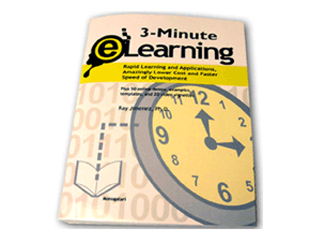
Unbundling Content
Download eBook "Unbundling Content"
Examples, Demo Micro-Learning Ray Jimenez, PhD
VignettesLearning.com
Making eLearning Stick
The e-learning or live virtual class is animated and interactive, but are participants applying what they learn? This webinar will show you the latest research on e-learning and live virtual design practices - what works and what doesn’t work to make the e-learning stick. Based on Barbara’s new book Making Elearning Stick, you will learn research-tested techniques you can begin using immediately, with any training topic, to increase transfer to the job.
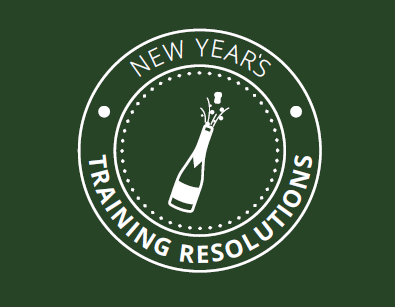
2018 New Year's Training Resolutions
Making resolutions can be a practical way to reflect on and determine goals that are important to you in the upcoming year. To see results for resolutions in your employee training program, it’s a good idea to focus in on one or two at a time.
Your goals may be anything from figuring out how to fit employee training into your organization’s budget, to giving your program’s ROI a boost with post-training reinforcement.
There is always room for improvement, and the new year is the perfect time to set new goals for your training program.
In this guide, you'll find:
7 different employee training resolutions
Key data to understand each one
First steps toward the results you’re looking for
Click below to download this White Paper.

The Basics of Microlearning
Microlearning is a method of training that takes place in short, bite-sized units. It aims to teach content in the most efficient and effective manner possible. Learn the ways in which microlearning differs from traditional learning.
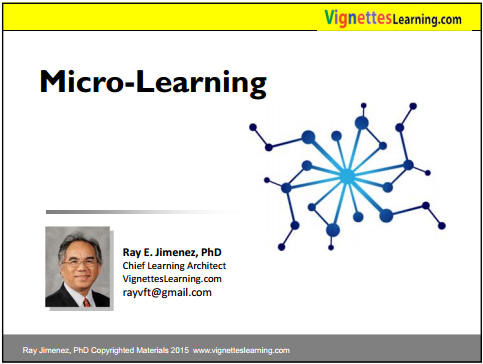
Micro-Learning by Ray Jimenez, PhD





















